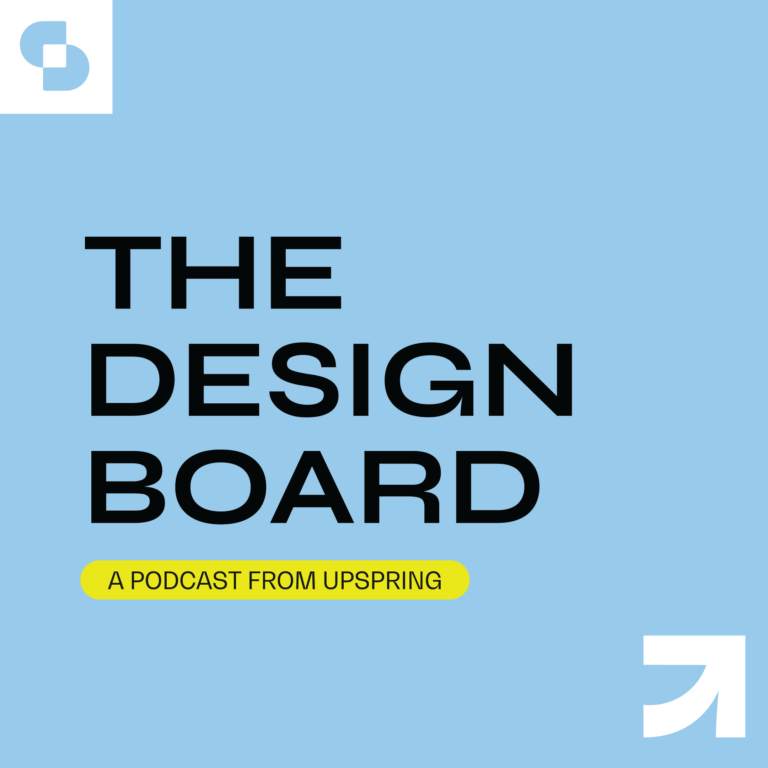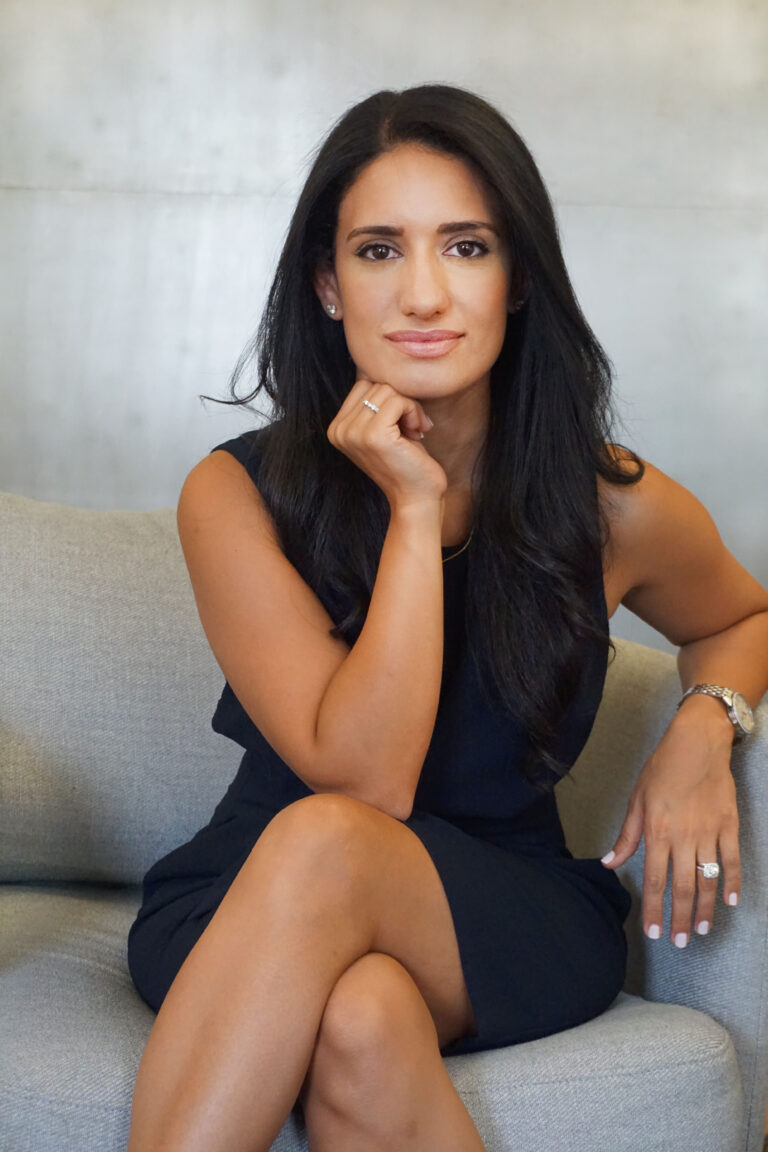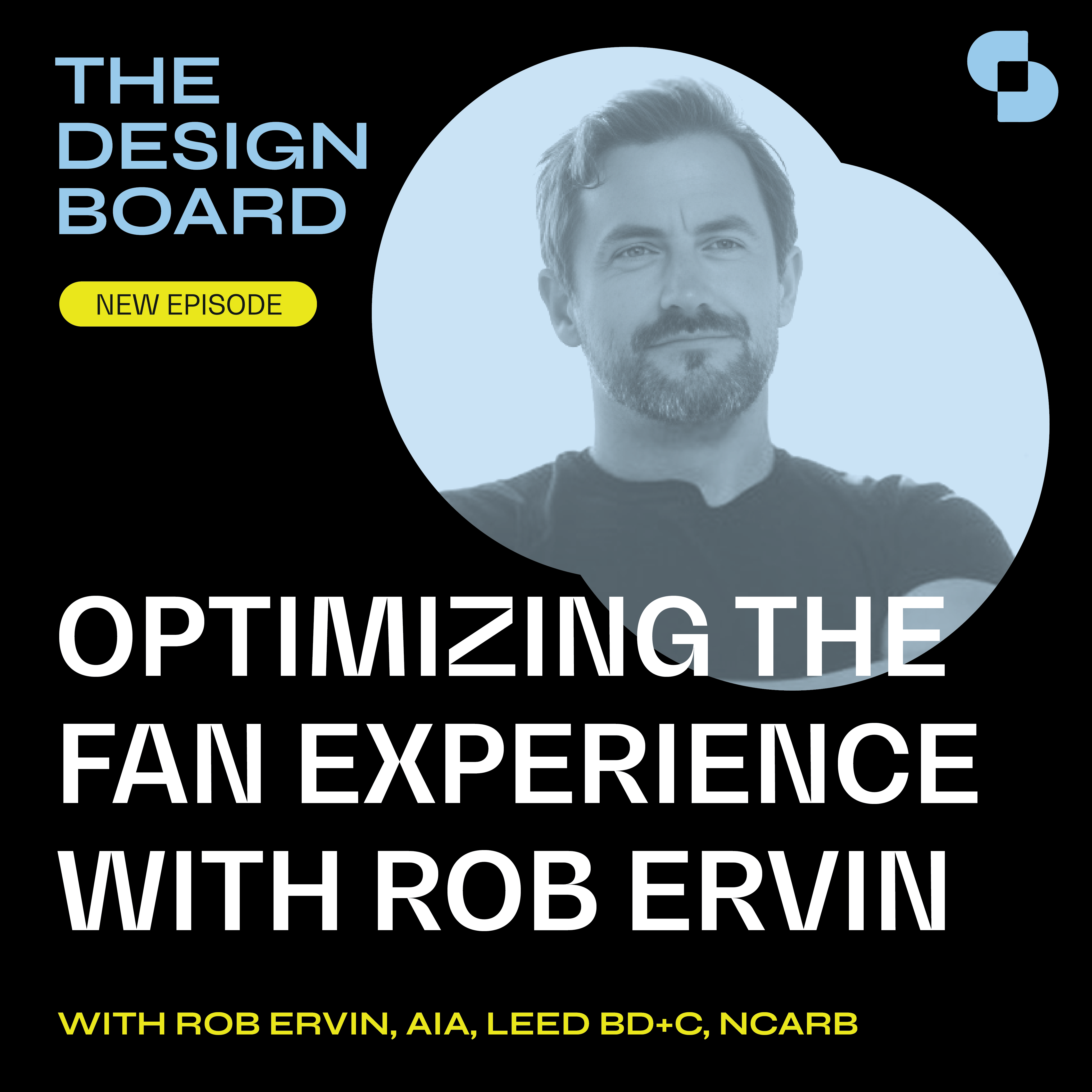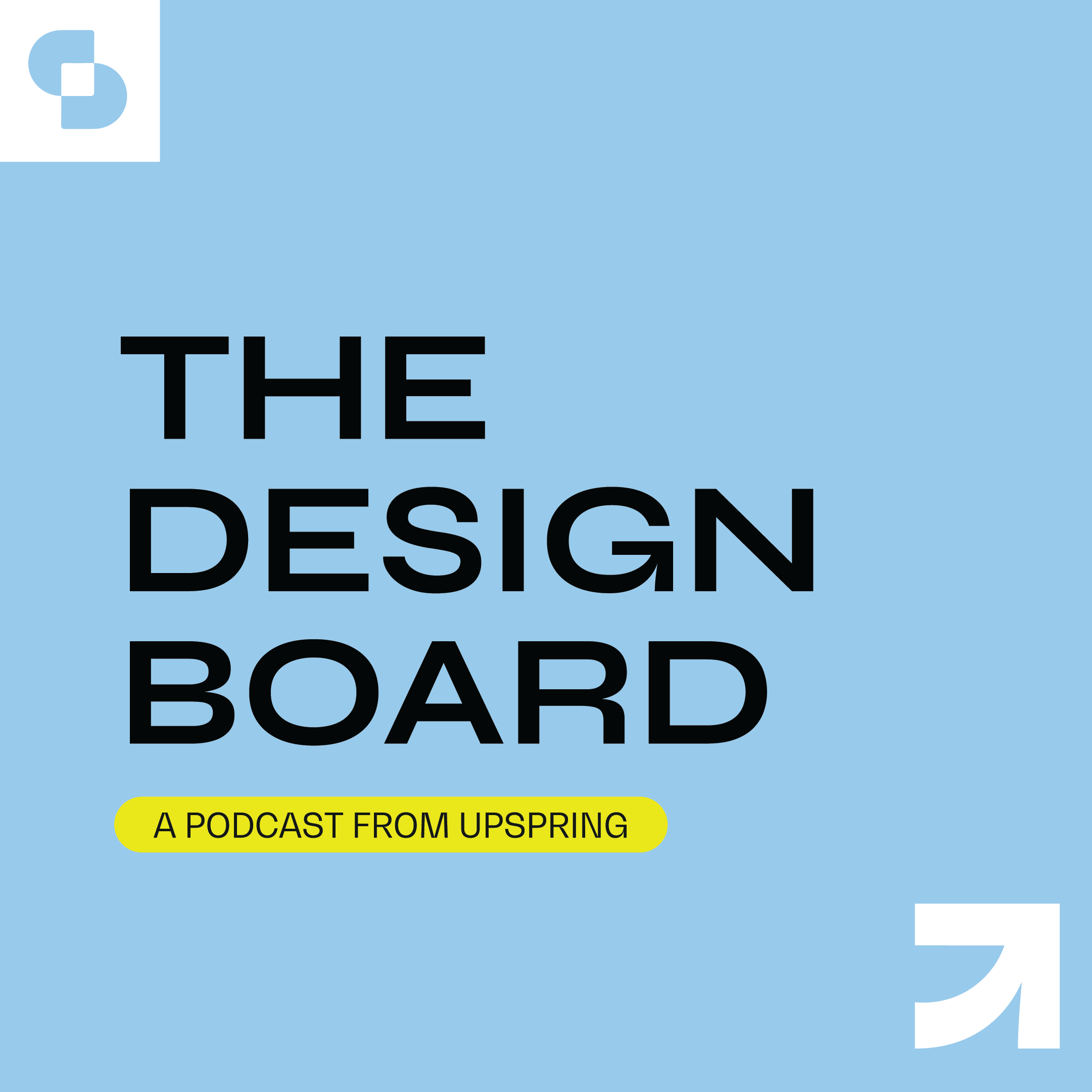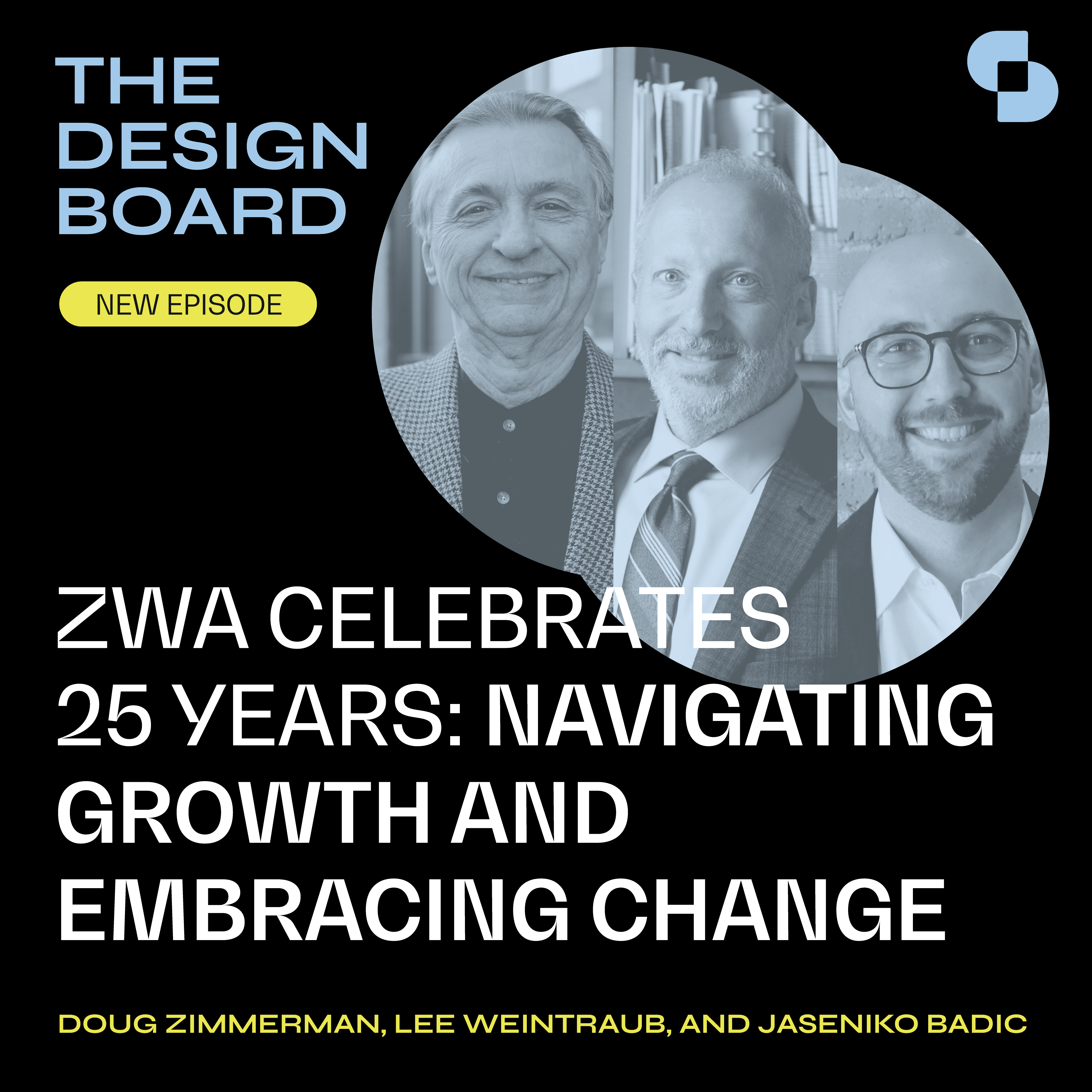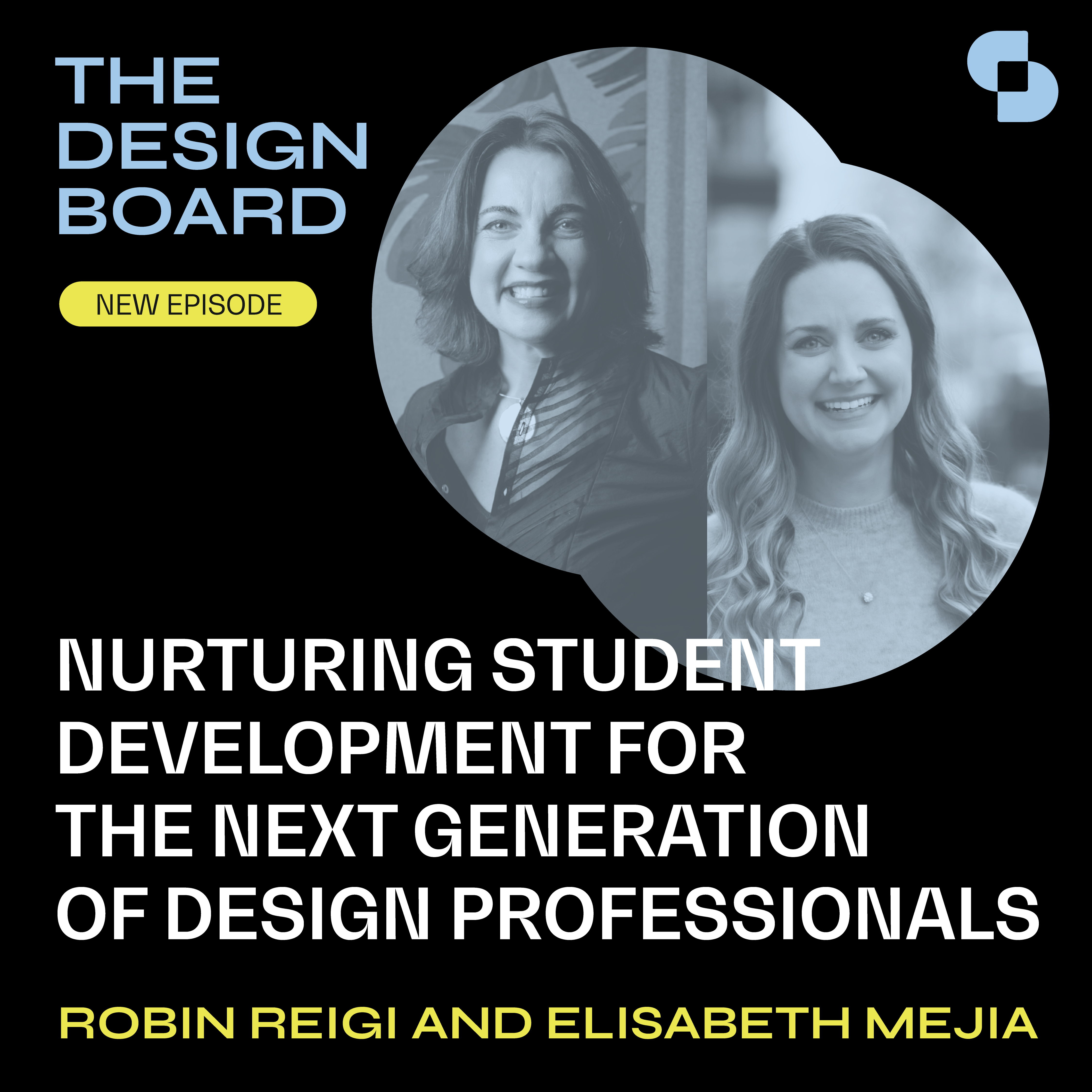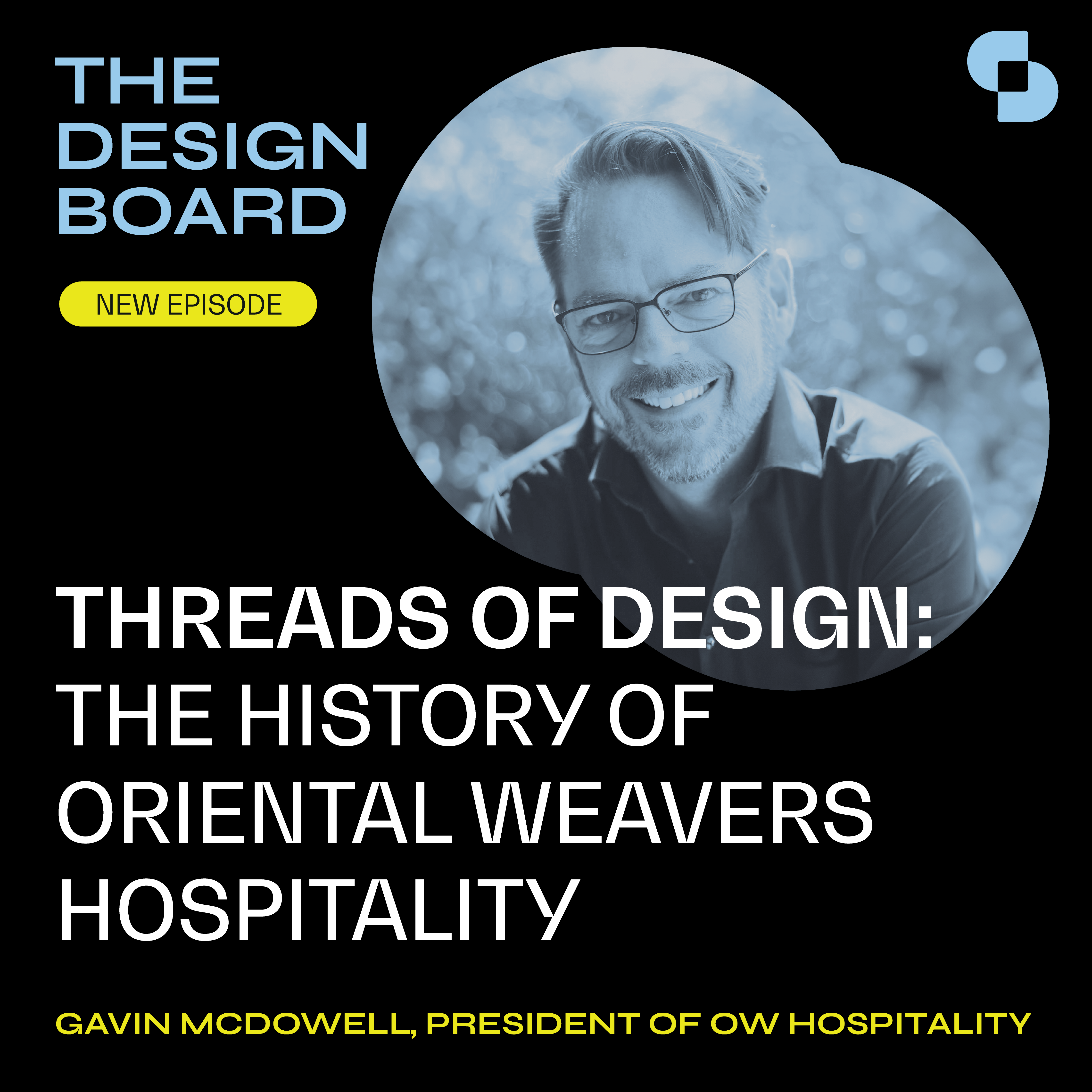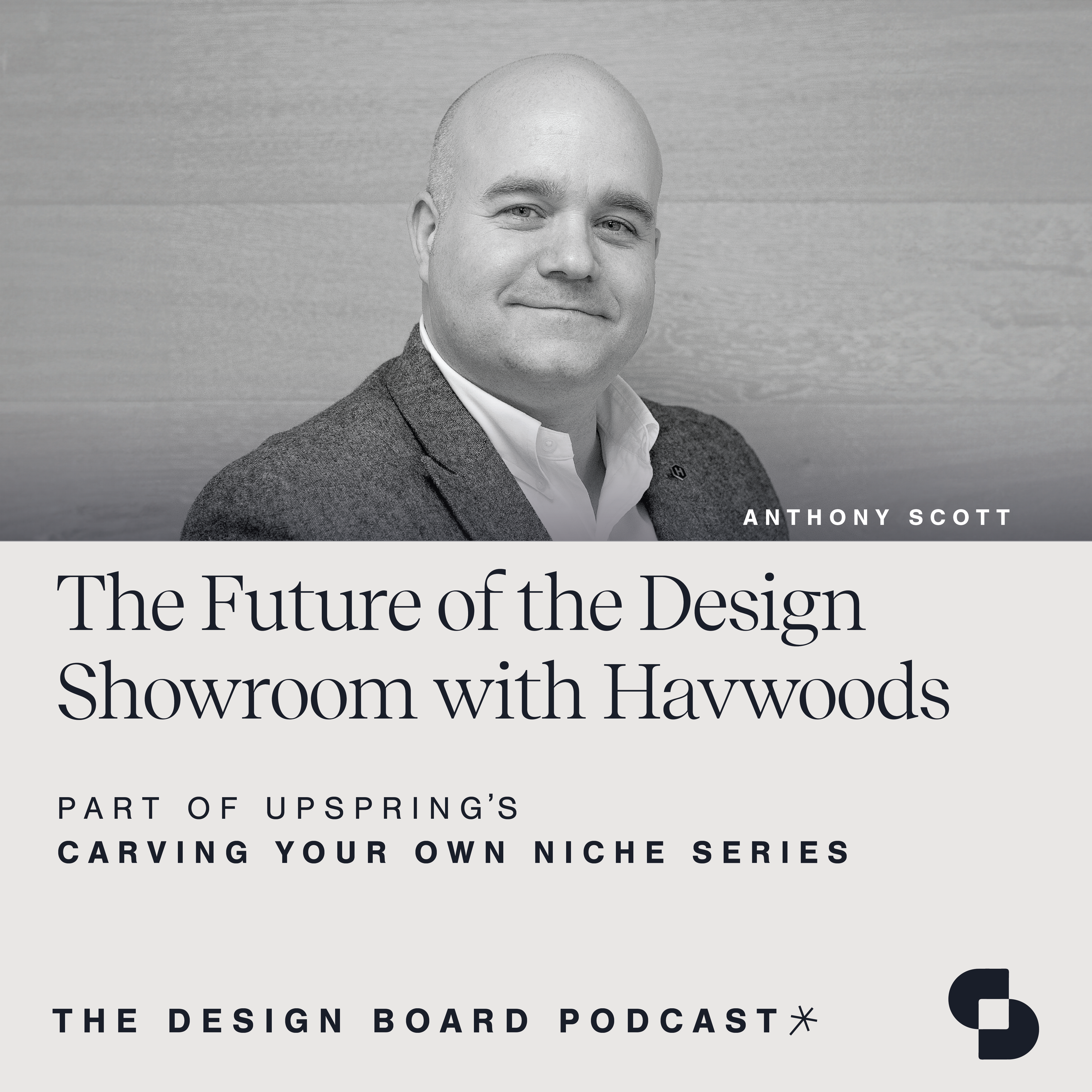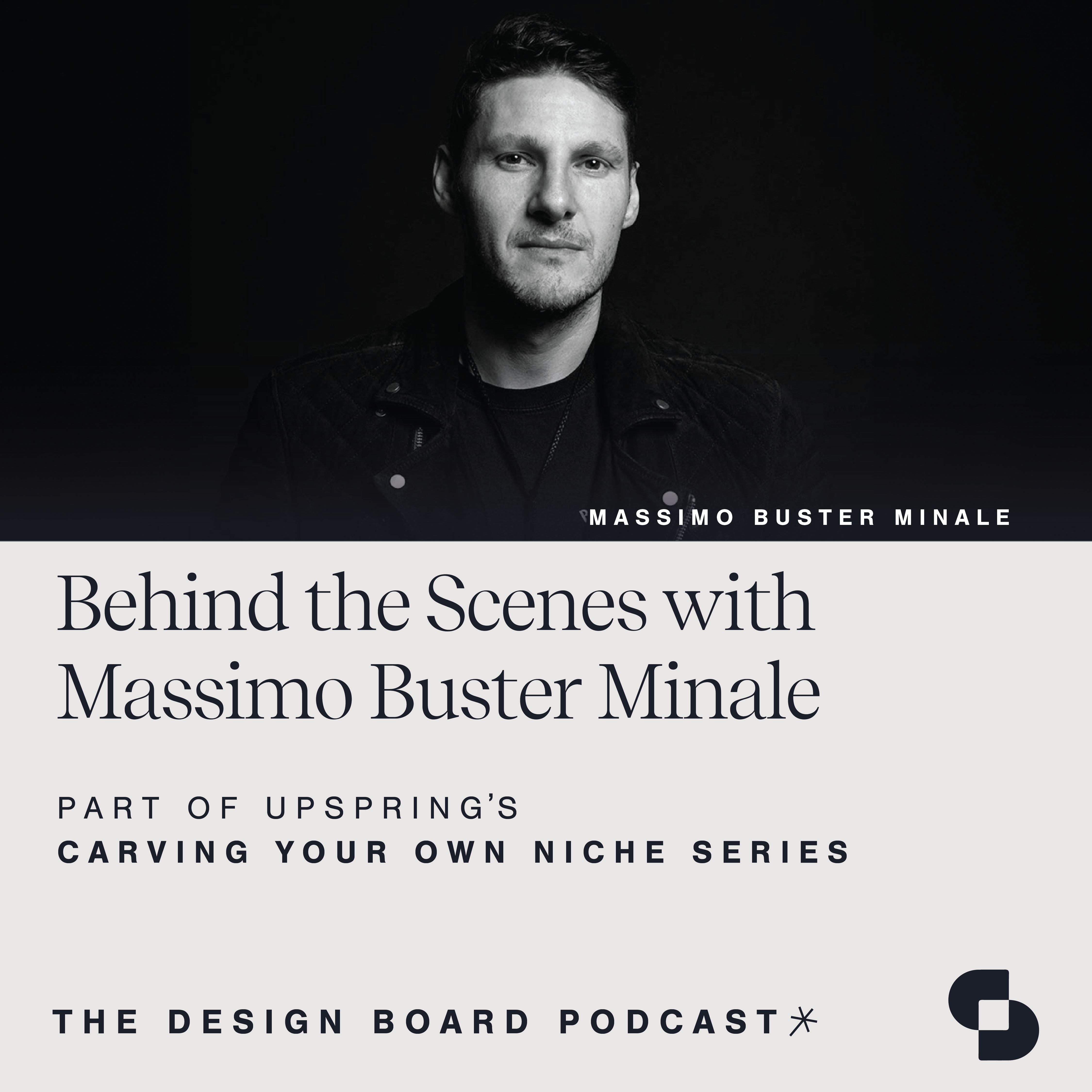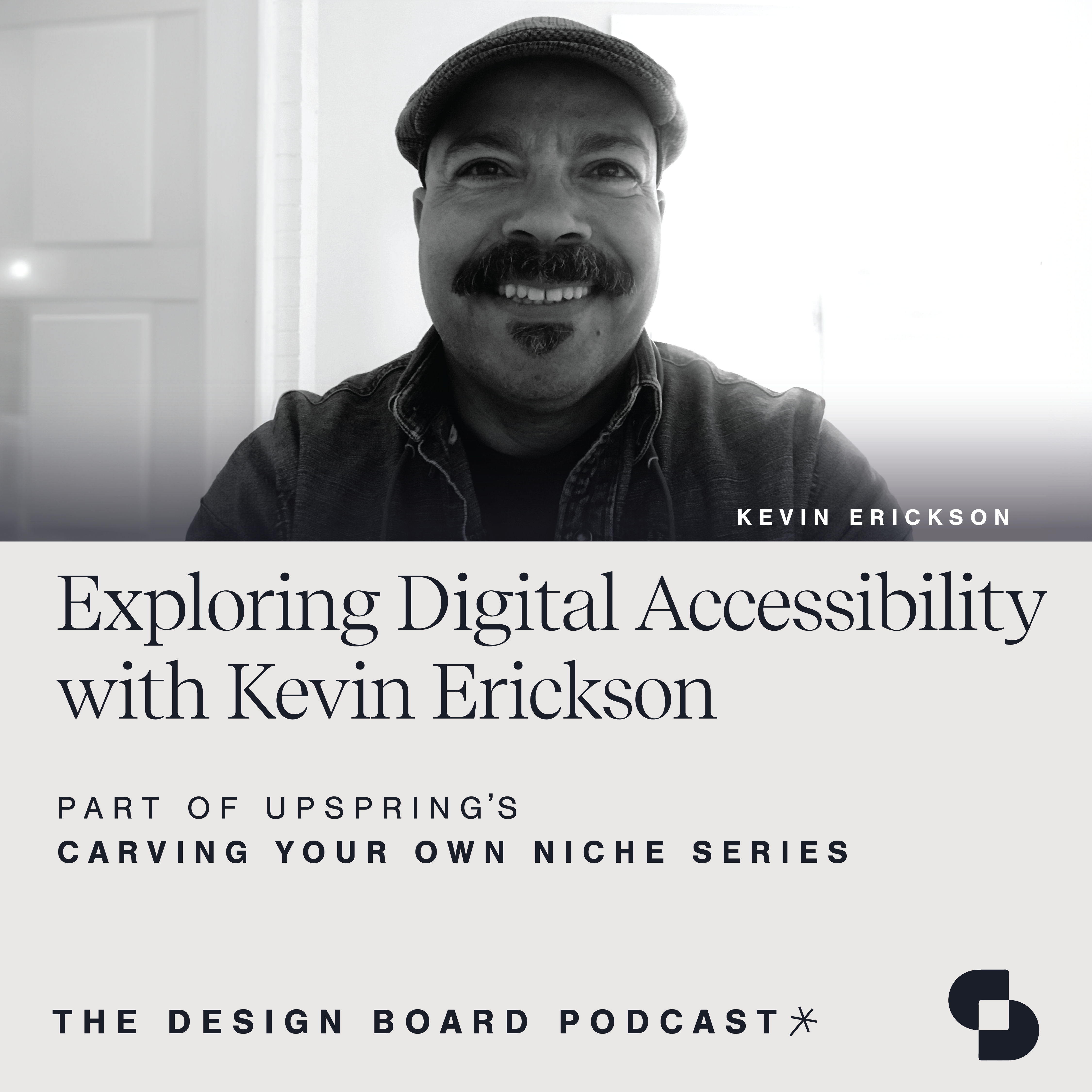Tiffany Rafii: Welcome to The Design Board, a podcast created by the team at UpSpring that focuses on design, development and everything in between. We invite innovators in our industry and explore topics that support your growth in every way. The Design Board is a proud member of SURROUND, a podcast network from SANDOW Design Group featuring the architecture and design industry’s premier shows. Check it out at surroundpodcast.com. Welcome, everyone, to The Design Board, a podcast by UpSpring that focuses on design, development and everything in between. I’m joined by the president and design director at Provost Studio, Peter Provost, and we are going to dive into the world of studio design and its impact on corporate communication.
Peter has spent more than 20 years helping companies fully actualize their brands in order to meaningfully communicate their stories, values and identities. As president and director of design, Peter hones his studio’s focus on broadcast design, interiors and branded environments, helping clients authentically express themselves within the built environment. Today, we are going to talk about the intricacies of designing broadcast studios for Fortune 500 companies, crafting brand identity through on-camera spaces and pushing boundaries in studio design to set trends. All right, Peter, so excited to have you here on The Design Board. Thank you for joining me.
Peter Provost: Thanks for having me. I appreciate it.
Tiffany Rafii: All right, well, we’re excited to dive in. Let’s do it. I’d love to start by giving our listeners some context. Peter, you and your team help clients communicate who they are and what they do spatially by designing immersive, visually-expressive spaces that engage the senses and authentically express an organization’s values through architecture, branding, digital media. Can you tell us a bit about your background and expertise and how you began specializing in creating broadcast spaces?
Peter Provost: Yeah, that was a lot, but yes, I appreciate it.
Tiffany Rafii: We like to go right for it, Peter, right out of the gate.
Peter Provost: Yeah, I know. Wow, I got to put that on a note card. So my background, I’ve got this hybrid background. Half of my experience is in architecture, formal practice doing buildings and interiors. Then the other half of my experience is working in, to be honest, marketing agencies and doing experiential marketing and branded environments and interiors. So in addition to that, I also have broadcast news background, and so the practice really today is this hybrid fusion between all of those things. So at the most basic level, I like to think that we basically create spaces and interior architecture for video content. So anything that’s on camera, those spaces we design.
Tiffany Rafii: That’s great. Anything more you can tell us about how you stumbled into this? Perhaps it’s more strategic for you. I tend to stumble into the most things that I do, but…
Peter Provost: No, no, no, it’s a little bit of both, strategery and right time, right place. So I went to grad school in New York, after grad school, worked in an architecture practice, and then had a colleague actually that was working in an agency. At the time, they were doing branded environments, but then they also had a pretty well-developed broadcast practice. So actually, my first job in broadcast was this fusion between broadcast space and interior architecture when the firm that I was working at, their long-standing client was CNN. The first job was the Time Warner Center, and so a really unique opportunity to rebrand the whole network relative to on-air presence, but then also building and designing the workplace and the newsroom. So just that initial project really set a trajectory of, “Well, wow, this is really interesting.”
Tiffany Rafii: Yeah, and unique.
Peter Provost: Yeah, and unique. I think that the way that broadcast production has evolved over the years, back in the day, meaning 20 years ago, it was really only network television that did video content. Well, now, as we all know, these things have really enabled everybody to be content creators. So we have pivoted our expertise around creating space for television and entertainment towards corporate clients, Fortune 500s. It doesn’t have to be large Fortune 500s, but basically any organization, whether it’s a sports organization, healthcare, corporate, we create those kinds of spaces.
Tiffany Rafii: So we love a good trend around here, which makes sense for us. But I’d love to take your brain a little bit on the rise in broadcast spaces and the desire for people to have them in their organizations and working them into the design and development of the spaces that they are taking over. So I’d love to get your perspective on why you think that is. Why has this trend emerged, and what can we expect from it taking off?
Peter Provost: Well, I think when you look at big picture of how things have evolved, just black and white, so back 20 years ago with the Time Warner Center project, really, the technology wasn’t as evolved as it is today, which really was a barrier of entry for businesses to start creating content. So you push forward to today where everybody can create content with their phone, but more importantly, relative to, just what we’re doing now. So thought leadership is a way to establish your brand, is a way to talk about your superpowers and your expertise. The same thing is happening for companies like Prudential or Carolina Panthers or all of these clients that are creating content realize the power of video, whether it’s to explain how they can help you relative to finance and personal finance or quite frankly, engage fans. But I think what’s interesting is I have colleagues that are in, let’s just say, more traditional interior and architecture practices that are now getting requests from clients about podcast spaces and conference rooms.
I would say 9 out of 10 times, it’s like a podcast space or making a conference room camera ready. But multiple projects that we have right now, one in particular in New York that’s at Hudson Yards, 16 floors, yes, there’s going to be a black box studio and a control room. But what’s cool is that there are spaces throughout those 16 floors that we’re making camera ready so that people can create content. Oftentimes, in the corporate world at least, that video content wants to have a level of authenticity, and what better to have an authentic moment than in your workplace, in the cafe or in some other circulation space that’s actually part of the place? So yeah, it’s really evolved from commercial broadcast to broadcast studio for corporate clients, and now it’s evolving from inside of that studio to the workplace and having these almost like a constellation of camera-ready spaces throughout the whole headquarters.
Tiffany Rafii: So the impact of high-quality studio environments on corporate comms is, of course, undeniable. How do these spaces elevate a company’s overall communication strategy? So I really love what you’re saying about creating authentic moments and creating spaces that lend themselves to that spontaneity and that authenticity. But I’d love to have you elaborate there a little bit more.
Peter Provost: I think whenever there’s an organization that’s creating video content, there’s often multiple departments within that organization that are responsible for video content of some kind. So it could be the marketing department relative to marketing content. It could be the communications department where maybe there’s a C-suite address that happens every quarter. Then there could also be the meetings and events or facilities group creating content. Sometimes not every project are all three groups present. Not often when all three groups are present are they totally communicating in a holistic way relative to the space. I think that as an example, every space that we have generally does more than one or two things. They’re using it for remote meetings and events. They’re using it to do, again, a C-suite address or an earnings report. They’re using it to create content for the HR department that talks about, that interviews new employees about the day in the life. So I think that as content creation becomes more mainstream, we’ll continue to build these studios that’ll do more than just one thing.
Tiffany Rafii: No, I think that is a really great point. They have to. We need to make sure that it can also be super versatile. When it comes to creating and crafting that brand identity, though, for those on-camera spaces, how do you and your team ensure that the studio environment actually reflects the brand’s values and message and really falls in line with their overall company ethos so that when they’re recording and having… A lot of those are really big company moments that are happening in these spaces, that they’re really reflecting that brand and it’s carrying through.
Peter Provost: It’s magic. Now, I think that there are some things that are pretty objective about it. So oftentimes, there will be an established brand look and feel or brand guidelines that cut across all communication channels. So whether it’s web or whether it’s print, quite frankly, it could be interior architecture, but often what happens is all of the standards or guidelines when it comes to video production aren’t quite there yet. So again, and by no means do we design spaces just with logos and colors. That’s really not what we’re talking about when we’re talking about branding a space or creating a space that is authentic to the company. But at the end of the day, oftentimes, there’s a mismatch between the production quality of the video and the other communication channels that the brand is expressing. So I would say as an example, we have Fortune 500 companies that we’ve worked with before that for all practical purposes, the quality level between all of those communication channels is pretty high.
But then when you start to look at a one-on-one discussion with somebody, and it looks like the between two fern set where there is no personality within the space that expresses the brand, that’s the moment where we come in and say, “Okay, hey, let’s try to address this.” But in particular, what makes a space unique for that brand, oftentimes, there’s obviously it’s all about material relationships, and obviously it’s the brand iconography. But more importantly, what we try to do is it’s not just the background, but it’s also how we use technology to help express the content. So it could be something where whether it’s a monitor, whether it’s an LED wall, whether it’s a touch screen that engages the audience that’s watching, but also engages the on-camera talent that uses that technology to help express what it is they’re talking about. Technology, lighting, scenery, acoustics too, actually, are all part of this design process. So I like to think, yes, a lot of it is what you visually see as an audience member, but there are lots of other things that go into it that create a space that really works.
Tiffany Rafii: I love that. Clearly, innovation is a big part of the process and what you do. I would love it if you’d be willing to share some examples about how you’ve pushed the boundary in studio design, and if you’ll give us a peek at some recent projects you’ve worked on or maybe things you’re allowed to share that are in the works.
Peter Provost: Yeah. Well, I think two recent projects, actually, they’re right behind me. One is commercial broadcast or finance. We just completed a new studio for Yahoo Finance in New York. Then a non-broadcast example, we just finished a video content studio for the Mayo Clinic in Minnesota. So I think what’s happening in, let’s just say what I call non-traditional broadcast or video content studio like Mayo Clinic, they’re creating content within that studio for two things. One is patient care, at-home, pre-op, post-op patient care. They’re literally creating content within that studio that shows or that helps patients day one and day two of their operation. Then they’re also creating content within that studio for doctor education and really, medical and healthcare trends. To be honest, this isn’t the first time I’ve said this, but 20 years ago when I started creating spaces for broadcast and broadcast television entertainment and video content, I really wouldn’t have anticipated that an organization, whether it’s the Mayo Clinic or any other, would be creating content studios to help people.
For me, that’s really unbelievably rewarding. So I think that as a project type is innovative in terms of creating better patient care and closer patient care and more informed patient care. Quite frankly, patient care on demand relative to what your issue is pretty interesting. The Yahoo project for Yahoo Finance, I think what makes that an interesting project is like many organizations, taking a real estate footprint that spans multiple floors, in certain instances, multiple buildings and consolidating that footprint into a much smaller footprint forces our work developing studios to be much more flexible. So as an example, the studio in New York for Yahoo Finance is literally like a glass box within a workplace. But within that glass box, there are multiple configurations that that studio can have that create, again, multiple content opportunities within environments.
The other thing that’s cool about that project is, and again, it’s a commercial broadcast/finance studio, but it’s also doing what a lot of our corporate clients in their workplace are doing in that not only are they shooting inside the studio, but they’re also shooting within the workplace. So there’s opportunities, there’s cafes and conference rooms, all of those things that are on camera that as a necessity, you have to start becoming much more efficient with the spaces that you do have. For us, it allows us to provide and work with architects, quite frankly, to help put the infrastructure in that allows video content creation to happen, but in a… I won’t say it’s not invisible, the infrastructure, but at the end of the day, it’s much more subtle than what it used to be ’cause now technology, lights are smaller, cameras are smaller, things are much more subtle than what they used to be. So yeah, past three to five years has been really interesting to see technology and video content creation continue to emerge.
Tiffany Rafii: I’d love to chat through the collaboration aspect a little bit. You just touched on collaborating with the architect on a project. I know there are generally many stakeholders involved in the projects that you’re bringing to fruition. I’d love to gain some perspective on how that collaboration occurs and how really, everyone comes to the table so that you can bring the magic to life.
Peter Provost: So the collaboration happens in two ways. One is generally speaking, when there’s, whether it’s a ground up facility or an existing facility that requires significant renovation, there’s the base building architecture team, which is the architects, the engineers, the GC, the owner. Then there’s what I call the broadcast video production team, and that’s spearheaded by us. Then in addition to that, we have our full team of consultants, scenic fabrication and installation, lighting, lighting infrastructure, on-set AV technology as well as acoustics. So what happens is that collaboration happens from one hub to the other.
The broadcast video production team and the base building architecture team collaborate on things like power and data runs, acoustics because there’s a lot of overlap between what that interface is between the video and broadcast production requirements and the base building infrastructure. So on a collaboration perspective, we’re doing that on a daily basis. I also think that the collaboration, not only with architects, but the collaboration among our video and broadcast team happens all the time. So it’s not like we’re creating this interior space and then bringing the team together to discuss what it is, we’re really starting… I like to think we really have an integrated design process that brings everybody together, including the architect and the base building team at the very beginning so that we can start to plan these things.
Tiffany Rafii: Yeah. Yeah, no, my next question was going to be about what part of the process you’re generally pulled in to get involved in designing these spaces. My guess is going to be never soon enough, but I’d love to hear a little bit about that.
Peter Provost: Yes. Never soon enough, oftentimes, and I kid, but so we’re the team that comes in when there’s a floor plan, and there’s a big bubble. Okay? There’s a big bubble around certain areas of the plan, and it says, “Design TBD by others.” Usually, we are the TBD by others. So the design gets to 50% CDs and the base building engineers want to know, “Okay, what are your power and data requirements? What are you going to do for lighting? When are you new for acoustics?” Generally, then we’re coming in and playing catch up. That probably isn’t going to change anytime soon, but I’m trying to do things like this that allow us to at least have a conversation earlier, hopefully.
I would say that actually there’s a really exciting opportunity that we’re pursuing right now where there’s a new broadcast facility being built from ground up. Again, if we’re lucky enough to win it, we’re going to be collaborating from the very beginning, even blocking and stacking relative to building planning where it’s not going to be a facility that we squeeze the broadcast and video production spaces in, but we actually start with the broadcast and video production spaces to begin with and then really shape the building and the building spaces around the video production, which is really cool. So ideally, when clients want to do these kinds of projects, it’s very much a best case scenario when we are collaborating from the very beginning.
Tiffany Rafii: So very beginning, never soon enough, for everyone listening of when to pull Peter and the team in, considering the dynamic nature of corporate brands, how do you ensure that the studio environments have the flexibility to adapt and evolve along with the brand’s identity and messaging?
Peter Provost: So here’s the thing, and this is also happening in commercial broadcast as well, where there’s a greater demand for more content and flexible studio spaces. Oftentimes, there’s an idea from the corporate side, corporate communications or marketing or facilities and events. They know they want to create some content, they just don’t know how much, what kind, what’s the use case? They just don’t know. So the good part is, is that there’s a, that they need to have a flexible space. Okay? So that’s a good thing. I think what one of our superpowers is, is not only creating a space that you can do that in relative to what the client needs, but we have a process in terms of discussing how they want to use the spaces, how they currently see using the spaces, how they see themselves using the space in the future.
Sometimes they don’t know, and again, we share best practices. So I know it’s probably not the greatest analogy, but I like to think of our studios as like a Swiss Army knife and not the Swiss Army knife that nobody uses the toothpick, but the Swiss Army knife that everybody uses five or six different tools within the studio that allow them to do certain things that, yes, that they’re doing right now, but it has the ability to do 2, 3, 4 additional things in addition to what they need. That flexibility happens in a bunch of different ways, but mostly, it’s moving and tracking scenery, scenic elements, and AV LED components.
It’s also the easy piece is the color LED, color-shifting ability of scenic elements. But really the big flexible piece is, and again, what we’re finding is large LED displays. What I mean by that isn’t just like a TV or a monitor, but it’s literally like an LED background, and we’re actually creating virtual backgrounds as part of the physical scenery. So you have this physical and virtual overlay within a studio that then create really the ultimate flexibility, because you’re only limited by your imagination and your creativity around new virtual environments that can be on camera that if you do it right, you actually can’t tell the difference.
Tiffany Rafii: Okay. So we love to leave these podcasts, although we don’t want to leave you, but we love to leave these podcasts with a look forward or a piece of advice that you’d like to share. What are you most excited about? What do you hope next year will bring or something that maybe is upcoming that you really want to sneak a peek for us? I leave it in your hands, Peter.
Peter Provost: Okay. That sounds good. Bit of advice is, it’s not as complicated as it may seem. It’s not as scary as it may seem. You don’t need a million bucks to do a studio, you can start small. It just takes some planning. That’s the first bit of advice. That’s for small companies like ours, and that’s for big brands and Fortune 500s all alike. So that’s the first piece. What’s happening in the future? What’s going on right now? We opened an office in Georgia in Atlanta last fall, and mostly that’s a strategic move. That’s in response to virtual production, which is this thing that’s happening right now, which I just spoke about, where you’ve got physical and virtual within the same space. What makes it so exciting is that as again, you may or the listeners may or may not know, Georgia right now, is experiencing a renaissance relative to film and television production, and we are tangentially attached to that as a discipline.
But what’s really cool is we are having some of our clients, actually, we’re planning three virtual stages right now for corporate clients. As those requests for virtual studios increase, we are going to be doing more and more virtual environments, which basically means yes, we’re always going to be doing physical spaces, but the virtual environment on things like LED screens and LED volumes are going to become more the norm. So our move, our push to Georgia is to really tap into both talent that’s there relative to things like Unreal Engine and virtual production, but then the tools are there as well. So what I’m talking about is green screen volumes and LED volumes. It’s a really exciting creative atmosphere that I think is already paying dividends for us being down there around that level of expertise and creating our own virtual production creative team.
Tiffany Rafii: Amazing. Well, we are going to be watching and over here cheering you on. Can’t wait to see what’s to come. Thank you so much for your time today, Peter. I think content, I say over and over and over again, it’s all about content. You all are on the front lines of giving people the opportunity to create that content in a way that’s actually meaningful and can make real impact. So I know I really can’t wait to see how this segment of the industry continues to grow, change and evolve. I do not think it’s really a trend. I actually think it’s going to become a cornerstone of our industry and we’re seeing it crossover so many sectors that I really just can’t wait to see how that continues to change and the impact that you all continue to make.
Peter Provost: I agree, and I will be right here watching and anticipating with you. So it’s an exciting place to be.
Tiffany Rafii: Yeah, for sure, for sure. All right. Well, thank you again for letting us grill you a bit.
Peter Provost: All good.
Tiffany Rafii: We can’t wait to see what comes.
Peter Provost: All good. Thank you so much.
Tiffany Rafii: Thank you so much for listening in with us today. We hope you leave inspired by the ideas in today’s episode. For more, follow UpSpring on LinkedIn and Instagram, and don’t forget to check out the amazing lineup of shows brought to you by the SURROUND Podcast Network at surroundpodcast.com.

